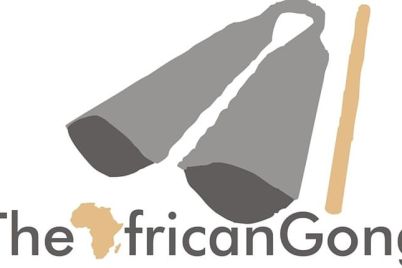In order to tackle the climate, biodiversity and land degradation crises the world is faced with, a total amount of US $8.1 trillion is required to achieve this,said the State of Finance for Nature report released Yesterday. By Sarauniya Usman,Abuja
The report says if the world is to meet the climate change, biodiversity, and land degradation targets, it needs a total investment in nature of about USD 8.1 trillion between now and 2050 to meet up the climate change, biodiversity, and land degradation targets.
According to the State of Finance for Nature report it reveals that to successfully tackle the interlinked climate, biodiversity, and land degradation crises,increasing investments in habitat protection is key to hastening green growth and averting the spread of disease-causing pathogens.
According to the report, an annual investment of 536 billion dollars annually is required between now and 2050 to help cover a 4.1 trillion dollars financing gap that could derail the realisation of a low-carbon and sustainable future.
The report finds that annual investments in nature-based solutions will have to triple by 2030 and increase four-fold by 2050 from the current investments into nature-based solutions of USD 133 billion (using 2018 as base year).
This report was produced by the UN Environment Programme (UNEP), the World Economic Forum (WEF) and the Economics of Land Degradation (ELD) Initiative hosted by the Deutsche Gesellschaft für Internationale Zusammenarbeit (GIZ) in collaboration with Vivid Economics.
The report urges Governments, financial institutions and businesses to overcome this investment gap by placing nature at the heart of economic decision-making in the future.
The report also stressed the need to rapidly accelerate capital flows to nature-based solutions by making nature central to public and private sector decision-making related to societal challenges, including tackling the climate and biodiversity crises.
According to the report,
Structural transformations are needed to close the USD 4.1 trillion finance gap between now and 2050, by building back more sustainably in the wake of the Covid-19 pandemic, but also by repurposing harmful agricultural and fossil fuel subsidies and creating other economic and regulatory incentives.
“It states that investing in nature supports human, animal and planetary health, improves quality of life, and creates jobs”.
However, nature currently only accounts for 2.5% of projected economic stimulus spending in the wake of Covid-19. Private capital will also have to be scaled up dramatically to close the investment gap”.
” Developing and scaling up revenue flows from ecosystem services and using blended finance models as a means to crowd in private capital are among the suite of solutions needed to make this happen, which also requires risk-sharing from private sector entities”.
UNEP Executive Director, Inger Andersen,said,“Biodiversity loss is already costing the global economy 10 percent of its output each year. If we do not sufficiently finance nature-based solutions, we will impact the capacities of countries to make progress on other vital areas such as education, health and employment. If we do not save nature now, we will not be able to achieve sustainable development”.
“The report says, a wake-up call for governments, financial institutions and businesses to invest in nature – including reforestation, regenerative agriculture, and restoration of our Ocean,” she said,
Adding that countries and leaders of industry will have an opportunity to do so at the upcoming summits related to climate, biodiversity, land degradation and food systems, and in the context of the UN Decade on Ecosystem Restoration (2021-2030).
The report states that, forest-based solutions alone, including the management, conservation and restoration of forests, will require USD 203 billion in total annual expenditure globally.
According to the report,”this is equivalent to just over USD 25 per year for every citizen in 2021.
The report therefore calls for coupling investments in restoration action with financing conservation measures. This could result in forest and agro-forestry (the combination of food production and tree growing) area increases of approximately 300 million hectares by 2050, relative to 2020.
The report authors say the annual investment of the private sector in nature-based solutions was equal to USD 18 billion in 2018. Private finance only accounts for 14%, including capital mobilised through sustainable agricultural and forestry supply chains, private equity investments, biodiversity offsets financed by private sectors, philanthropic capital, private finance leveraged by multilateral organisations and forest and other land use-related carbon markets.
It states that in climate finance, private sector investment accounts for most capital flows (56% according to the Climate Policy Initiative). The scaling up of private capital for nature-based solutions is one of the central challenges of the next few years with a specific focus on investing in nature to support sustainable economic growth in the 21st century.
“While a numbers of investors, developers, market infrastructure makers, customers and beneficiaries can play roles in creating a market where nature-based solutions access new sources of revenue, increases resilience of commercial activities, reduces costs or contributes to reputation and purpose”.
Adding that a number of private sector-led initiatives have already emerged, the report stresses the need for companies and financial institutions to increasingly be part of the solution by sharing the risk and committing to boost finance and investment in nature-based solutions in an ambitious way and with clear, time-bound targets.
“While investments in nature-based solutions cannot be a substitute for deep decarbonisation of all sectors of the economy, they can contribute to the required pace and scale of climate change mitigation and adaptation”.
End…


